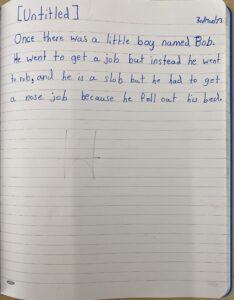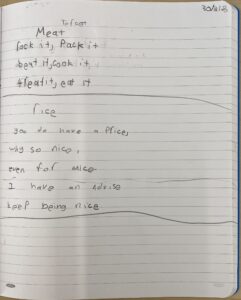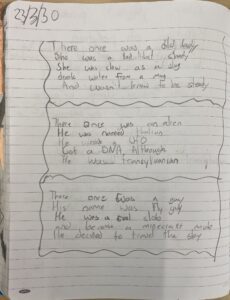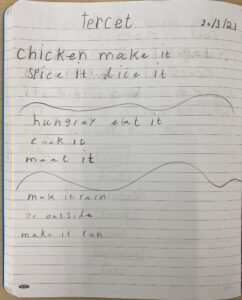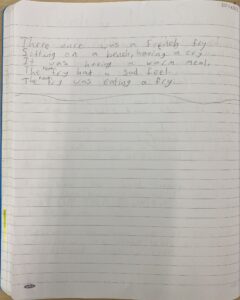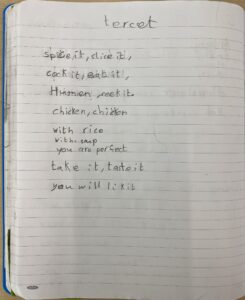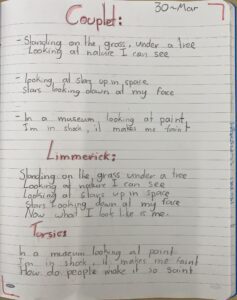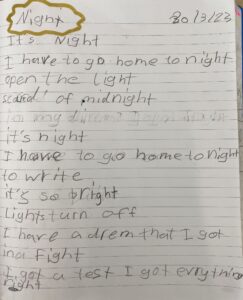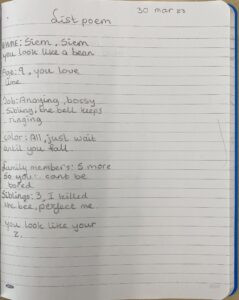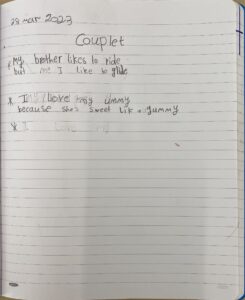Year-to-Date: 471.9.4; Mar 2023: 133.1; Last Week: 32.0
Students are midway through a literacy unit focused on reading and analyzing poetry in order to write themselves. As part of encouraging students to direct their own learning as much as possible, I introduced two tools: annotations and progressions. I’ll add my thoughts and ideas on learning and teaching for both tools before showing you–my audience–how this works for our learning community.
Annotating a piece of writing is one powerful way for readers to understand and connect to the writing. Readers do this by analyzing a piece of writing through different lenses; sometimes this means focusing on forms of poetry and sometimes this means focusing on the writer’s intention. Students annotate the poems that we read by commenting directly onto a shared Google Doc.
Using writing progressions are another powerful tool that students use to compare and contrast their approach to learning to an accepted and published standard. In this case, I introduced a writing process progression developed by colleagues at the TCRWP. Students focus on how to generate ideas appropriate to genre, how to spend an hour drafting, how to revise using a variety of resources, and how to edit using conventions, such as punctuation, spelling, grammar, etc.
How this works … All photos represent work completed and performed during the morning of Thursday, March 30, 2023. Although some names were included due to the subject matter, most names were omitted to provide a more balanced view of current writing abilities. When I search for inspiration, I often come back to a verse written by Erica Jong: “People think they can do without poetry. And they can. At least until they fall in love, lose a child or a parent or lose their way in the dark woods of life.”


